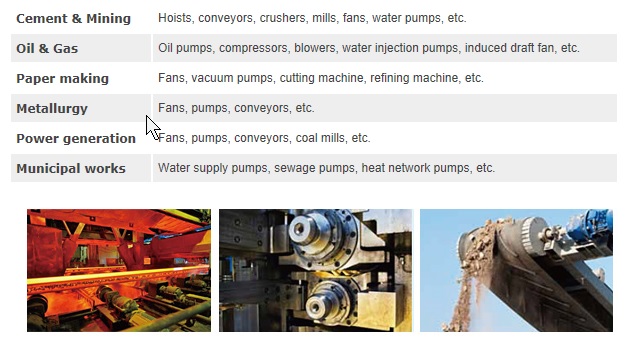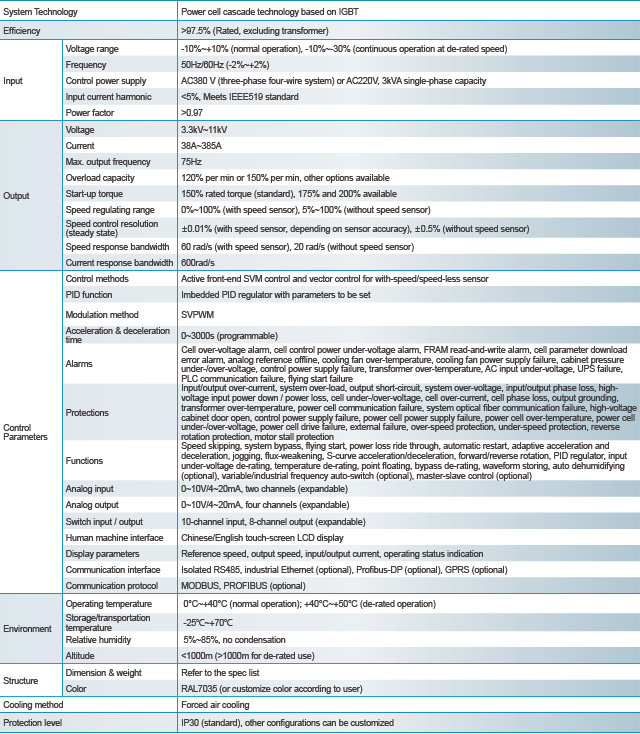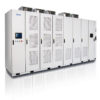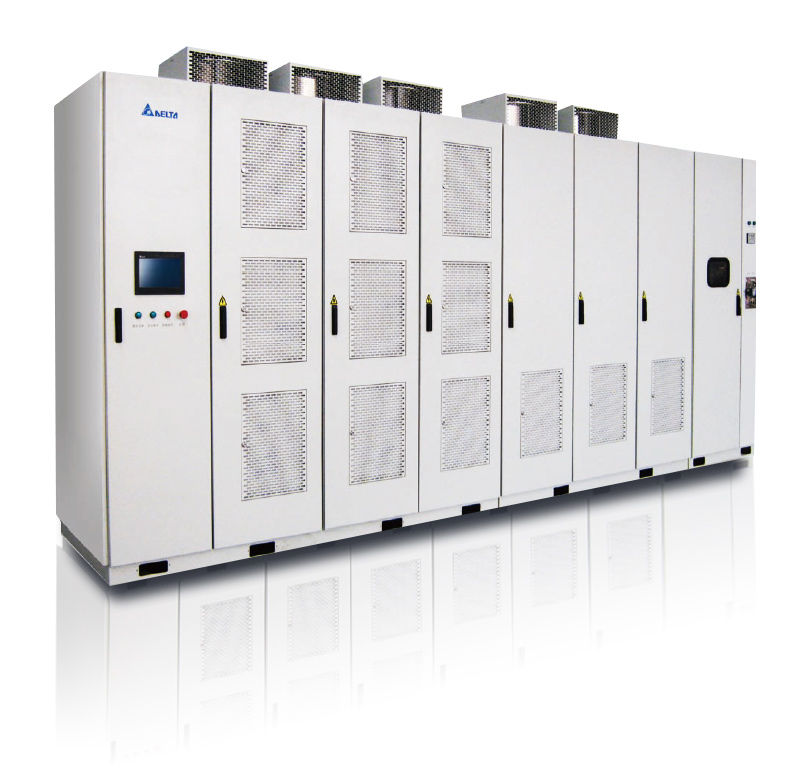MVD3000 Series
Having adopted the leading technologies of vector control and energy feedback, the MVD3000 Series variable-frequency speed regulating system is a high-performance product with accurate speed adjustment and four-quadrant operation ability, which makes it highly reliable, user-friendly with its operating interface, diverse in communication means, complete in safety assurance system, as well as easy to maintain.
Description
With an SVM full-control rectifier, the MVD3000 power cell achieved low harmonic pollution, implemented bi-directional flow for high-power factors and energy, and is high-performing, highly efficient, and highly stable. By decoupling control of the motor flux and torque, the high-performance vector control technology used by the MVD3000 receives fast dynamic response for torque and features the ability to output high torque during motor startup and idle running speed. It achieves a more stable motor operation and more accurate speed control, which satisfies applications with higher speed adjustment.
The MVD3000 supports vector control with and without speed sensors. Users can decide whether to install a speed sensor according to the applications on-site.Without a speed sensor, it can still provide fast dynamic response and greater output torque under low speed.

Features & Benefits
Advanced Technologies
- • Adopts SVM full-control rectifier technology with a high power factor for grid access points, low amount of harmonics, higher ability to resist power disruptions, and wide range of applications.
- • The MVD operates in four quadrants and implements fast load-side braking and grid-side energy feedback.
- • Advanced vector control technology with and without sensor, excellent motor control performance.
- • Advanced automatic recognition of motor parameters, DC braking, power loss crossing, synchronous/ asynchronous switching function for industrial frequency variation.
- • Fulfills coordinated control of multiple MVDs and satisfies diverse application requirements.
- • Features multilevel technology for cascaded cells. There is no need for an output filter. The output voltage waveform is similar to that of sinusoid waves and fulfills remote motor driving under adverse conditions.
Enhanced Process & Quality Control
- • Capability to produce large output torque at low speeds and during motor startup, increasing dynamic response speed and acquiring more stable motor operations and accurate control of rotation speed.
- • Embedded PID controller for accurate control on flow, pressure or other varying parameters.
- • Continuous operation under temporary input power loss and capability to restart automatically after grid fault.
- • Configurable stall/reverse/over-speed/under-speed alarm and protection to ensure quality control.
- • Selectable forward/reverse rotation switching
- • Friendly customer interface for easy system integration.
Control and Monitoring Functions
- • Power cell bus voltage
- • Power cell failure message
- • Transformer Fault
- • Command for rotation speed (rpm)
- • Operating rotation speed (rpm)
- • Input/output power, current, voltage
- • Accumulated running time
- • MVD status
- • System bypass switches and user breaker status
- • Programmable analog I/Os
- • Failure alarm
- • Event recording
Lower Cost of Ownership
- • MVD operates in four quadrants with energies passing through the inverter to provide feedback to the grid, enhancing operation efficiency for the system and achieving the effect of energies saving.
- • Optimized motor operations to ensure a high amount of energies are saved and to shorten the period required before return on investment.
- • Integrated transformer that adopts method of installation with three-cable-in-and-three-cable-out to minimize amount of work needed.
- • Reduces mechanical stress, eliminates pipe-hammer effect, and reduces maintenance costs.
- • Multilevel voltage output and starts control of current to reduce impacts to motor.
- • Synchronous switching, with one invertor to accomplish soft start of multiple motors.
Protection Functions
- • Control power loss alarm/protection
- • Power cell failure alarm/protection
- • Input/output over-current protection
- • Overload protection
- • Transformer high-temperature alarm & over-temperature protection
- • MVD overheat protection
- • Under-/over-voltage protection
- • Cooling fan abnormal alarm
- • Cabinet door open protection
- • Cabinet pressure alarm
- • Output short-circuit protection
- • Input/output phase loss protection
- • Communication failure protection
- • Output grounding protection
- • Motor stall alarm/protection
- • Motor reverse rotation alarm/protection
- • Over-speed and under-speed alarm/protection
Applications

Specifications


